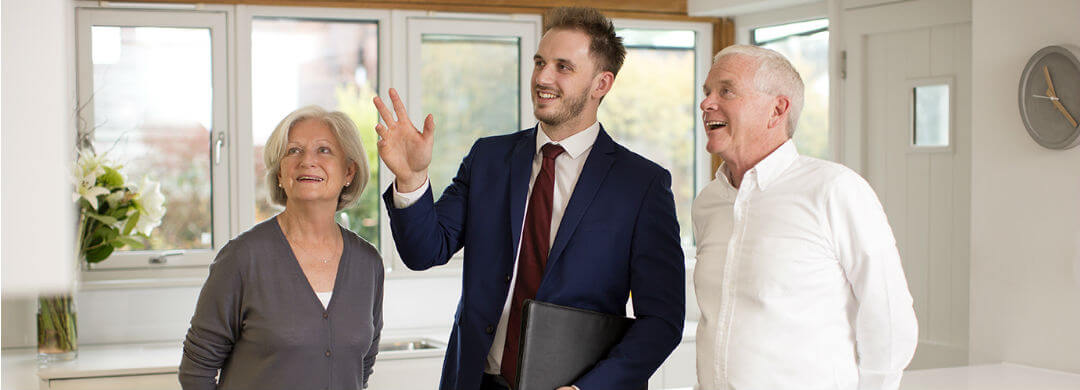When it comes to buying a house, there can be a lot to get your head around; lengthy contracts, difficult to read paperwork, not to mention the confusing language – what does it all mean?
Here is a list of common housing terms that will help you beat the jargon.
Buyer: that’s you!
Vendor: this is another term for the seller.
Freehold: a type of occupancy which means you own the building and the land it sits on.
Leasehold: this is where you own the property but not the land it is built on – for example, you may own a flat, but not the building it sits in. Our guide to buying a leasehold property tells you everything you need to know before you sign on the dotted line.
Bridging loan: a temporary short-term loan which enables a buyer to purchase a property before selling their existing property.
Equity: equity, or capital, represents the amount of money a homeowner has put into a property. This value is built up over time as the owner pays off the mortgage and the market value of the property appreciates.
Building survey: a report into the physical state of the property, this is also sometimes referred to as a full structural survey.
Covenant: a covenant is a provision or promise that has been written into a deed which may affect or limit the use of the property or land. There are two different types of covenant, positive and restrictive. A positive covenant is an obligation which requires some form of action (such as maintain a fence or wall), whereas a restrictive covenant limits or prevents the use of land in a specified way.
Easement: an easement is the right of one landowner to make use of another nearby piece of land for the benefit of his own land, for example, a private right of way.
Chain: a chain is formed when several property sales and purchases are inter-dependent. A chain can be complicated but a good estate agent will be able to help keep it moving.
EPC: an Energy Performance Certificate (EPC) shows the efficiency of a property and gives an indication of how much the energy bills will cost. It is displayed as two graphs – the energy efficiency, and the environmental impact of the property. Each is graded from A (the best) to G (the worst).
Under offer: if a property is under offer it means that the seller has accepted an offer from the buyer but the contracts have not yet been exchanged.
Exchange of contracts: the point where both parties are committed to the transaction; both the buyer and seller can walk away at any point before the contracts have been exchanged.
Completion date: when the transaction is complete and ownership of the property passes from the seller to the buyer. Normally, the vendor’s solicitor will ask the estate agent to release the keys to the buyer at this time.
Snagging: snagging is where the developer of new build properties touches up paintwork, adjusts appliances and fixes any other faults within the property. A snagging survey is usually completed prior to the buyer moving in, in order to spot minor cosmetic issues and check the quality of workmanship.
Stamp Duty: a lump-sum tax that anyone buying a property or land over a certain price in England, Northern Ireland and Wales must pay. The current threshold for residential properties is £125,000 and £150,000 for non-residential land and properties, however the rate you pay will vary depending on the overall purchase price. Read our Stamp Duty guide for more information.
Land Transaction Tax: the tax that will replace Stamp Duty in Wales from April 2018. The proposed tax rates and bands were announced in October 2017.
Land & Building Transaction Tax: the tax you pay when purchasing land or property in Scotland. The current threshold is £145,000 for residential properties and £150,000 for non-residential land and properties, however the rate payable is subject to the total purchase cost. Read our Stamp Duty guide for more information.
Base rate: the interest rate which is set by the Bank of England for lending to other banks. It is generally used as a benchmark for the interest rates banks charge when lending money to customers.
Fixed rate mortgage: with a fixed rate mortgage, you pay a set rate of interest on your mortgage for a fixed period, so you know exactly what you'll be paying each month.
Tracker mortgage: this is a mortgage with an interest rate linked to the Bank of England rate, or another base rate. The interest rate will go up and down depending on this rate, irrespective of the mortgage lender.
Variable rate mortgage: with a variable rate mortgage, the interest rate can change at any time. They are partly influenced by the Bank of England base rate but other factors come into play as well. The interest rate you pay on a variable rate mortgage can change even without base rate moving and similarly base rate might come down but your mortgage rate stays the same.
Source: Propertymark



